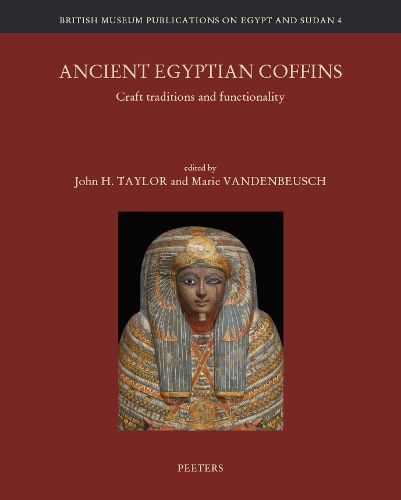Readings Newsletter
Become a Readings Member to make your shopping experience even easier.
Sign in or sign up for free!
You’re not far away from qualifying for FREE standard shipping within Australia
You’ve qualified for FREE standard shipping within Australia
The cart is loading…






This volume contains the proceedings of the twenty-third Annual
Egyptological Colloquium, held at the British Museum in 2014, augmented
by additional papers. The twenty-three contributions investigate
functionality, iconography and manufacture of ancient Egyptian coffins
from the First Intermediate Period to the eighth century AD. The authors
explore the conceptual aspects which lay behind the production of
coffins through the study of iconography and texts, examining the
functional role of these complex objects as ‘structured compositions’
which were designed to play an important part in transforming the
deceased occupants and perpetuating their existence beyond death.
Reinstating coffins in their archaeological and societal contexts, the
papers reflect on the circumstances in which they were made, considering
workshop practices and regional variability, and studying coffins not
only individually but also as components of larger conceptual entities
in which the mummy, the burial chamber and the tomb itself all had
specific meanings. Several contributions focus on areas of current
interest, such as the post-burial adaptation and reuse of coffins,
considering how these issues relate to the economic environment in which
they were made and to changing attitudes towards the immutability of
burial arrangements.
$9.00 standard shipping within Australia
FREE standard shipping within Australia for orders over $100.00
Express & International shipping calculated at checkout
This volume contains the proceedings of the twenty-third Annual
Egyptological Colloquium, held at the British Museum in 2014, augmented
by additional papers. The twenty-three contributions investigate
functionality, iconography and manufacture of ancient Egyptian coffins
from the First Intermediate Period to the eighth century AD. The authors
explore the conceptual aspects which lay behind the production of
coffins through the study of iconography and texts, examining the
functional role of these complex objects as ‘structured compositions’
which were designed to play an important part in transforming the
deceased occupants and perpetuating their existence beyond death.
Reinstating coffins in their archaeological and societal contexts, the
papers reflect on the circumstances in which they were made, considering
workshop practices and regional variability, and studying coffins not
only individually but also as components of larger conceptual entities
in which the mummy, the burial chamber and the tomb itself all had
specific meanings. Several contributions focus on areas of current
interest, such as the post-burial adaptation and reuse of coffins,
considering how these issues relate to the economic environment in which
they were made and to changing attitudes towards the immutability of
burial arrangements.